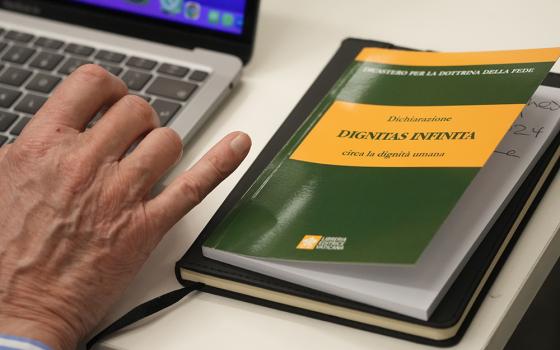The beginning and the end of Jesus’ life are the times most prominently portrayed in Christian art. While we may not think about it often, each depiction, all the Nativity scenes, sets of Stations of the Cross, and images of the Last Supper have great power to communicate an implicit theology, one that, like our hymns, subtly forms our spirituality and thus our way of living our faith.
Through the ages, Leonardo da Vinci and his colleagues have shaped our religious imagination, telling us, among other things, exactly who was at the Last Supper. They hardly ever deviate from showing only Jesus and the Apostles — almost never depicting the women who accompanied Jesus to Jerusalem and witnessed his crucifixion and burial. (Remember, women were at the table in the early Christian celebrations of the Lord’s Supper and we have no evidence that they were excluded from Jesus’ table.)
| Palm Sunday of the Lord's Passion |
| Matthew 21:1-11 Isaiah 50:4-7 Psalm 22 Philippians 2:6-11 Matthew 26:14-27:66 |
There is a little more breadth in representations of the Passion. We have graphic paintings and sculptures emphasizing physical suffering, Jesus’ great loneliness, apocalyptic cataclysms and even portrayals of a victorious, priestly Christ. Often the disciples who stood at a distance or at the foot of the cross — almost always pictured as in John’s Gospel, portraying the beloved disciple as more prominent than the women.
What if we would turn to Isaiah and Paul instead of allowing Mel Gibson and Leonardo to be our primary interpreters for the events of this Holy Week?
We can begin by trying to understand Jesus as the Suffering Servant of God. In today’s passage, the third of the servant songs, Isaiah depicts a servant-disciple, a prophet and more. As a disciple, his every day begins with obedient listening; he is in intimate communion with God, sharing God’s own heart. Because he is a prophet, the rest of his day is spent in speaking God’s word to the weary, or as Isaiah says in another place, giving hope to those who walk in the shadow of death.
More than any other prophet, Isaiah’s servant submits to suffering, accepting it without complaint. The difference between Jeremiah, who loudly lamented his suffering, and the one who gave his back to those who beat him demonstrates the distinction between a Jeremiah who, even knowing what it costs, does what the master asks, and the suffering servant whose communion with God is so profound that he understands the rejection he suffers as a rejection of God and believes that God shares that rejection with him. There is no complaint because they are undergoing it together.

Paul intensifies this interpretation of Jesus by giving us the hymn of Philippians 2. This depicts Jesus as the image of the self-emptying God, the God for whom no sacrifice is too great on behalf of beloved humanity.
The key difference in this interpretation is whether we conceive of Jesus as face to face with God, a servant sent on God’s behalf, or as the son who flows from the heart of God, as we say in the creed, God from God, light from light.
When we interpret Jesus’ passion through the lens that understands it as divine self-giving, thoughts of “paying for sin” fade along with every hint that God could have anything to do with violence. Jesus brings home that idea when one of his followers cuts off somebody’s ear. Jesus had taught his followers to contradict coercion with prophetic action by turning the other cheek; he had taught that God has nothing to do with vengeance but sends rain on the just and unjust.
When we allow Isaiah and Paul and Jesus’ own words to interpret his passion, we get the picture of Jesus as the expression of God’s unfailing love, a love rejected but never overcome.
Entering into this holiest week of our year, Matthew, Paul and Isaiah invite us to look again at Jesus and to see him through their eyes. As we grasp the idea that Jesus was both victimized and invincible, we understand more fully how he was truly the revelation of God’s way of being.
If we believe in Jesus as the revelation of God’s unceasing love, our own notions of sin and punishment and forgiveness will begin to mirror God’s mercy. Then our communal life will be capable of offering the world what it most needs: a living image of Jesus, the revelation of God’s great love.
[Mary M. McGlone, a Sister of St. Joseph of Carondelet, is currently writing the history of the Sisters of St. Joseph in the U.S.]








